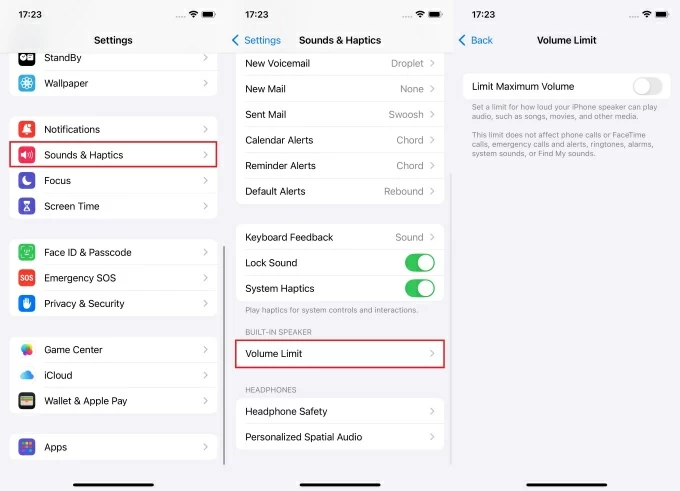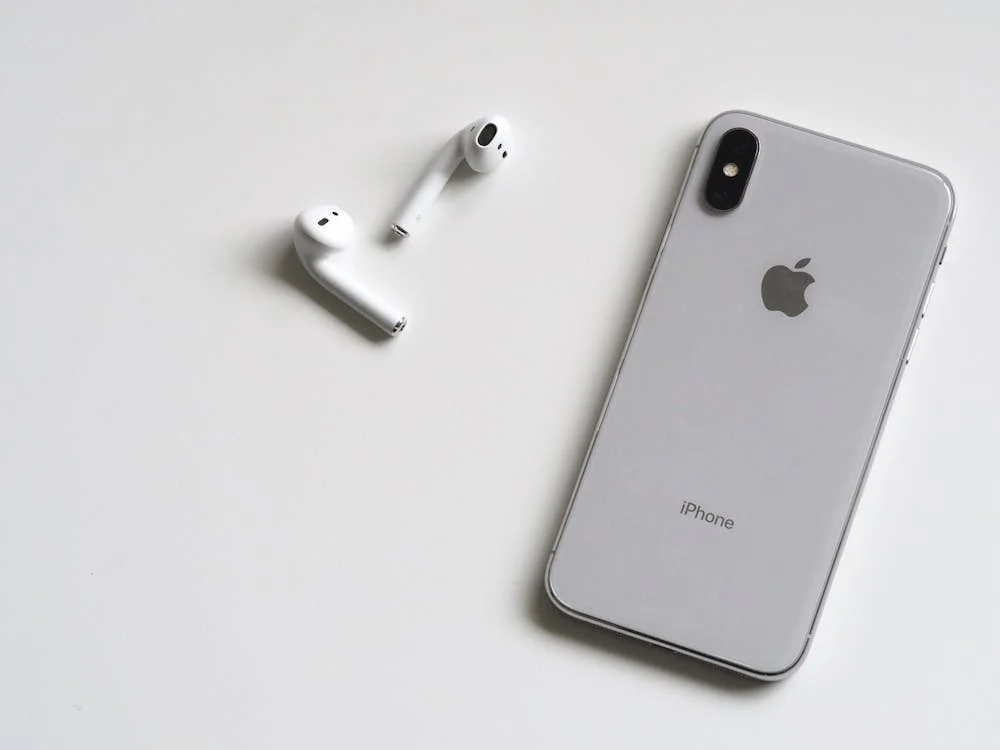Whether you’re an aspiring journalist, a budding podcaster, or just someone who loves capturing the vibrant sounds of the world around you, the microphone on your iPhone might not always cut it. In the quest for crisp audio, a plethora of external microphones are available that promise to elevate your field recordings to professional standards. In this listicle, we’ll explore the best iPhone microphones designed specifically for field recording—devices that will ensure your audio is as clear as a bell, even in the bustling chaos of the outside world. Get ready to transform your iPhone into an audio recording powerhouse!
When choosing the best iPhone microphone for field recording, several key criteria should be considered to ensure you capture high-quality audio on-the-go. Here are the factors we’ll be assessing in our listicle review:
- Audio Quality: The primary concern is how well the microphone captures sound. Look for a wide frequency range and high sensitivity.
- Compatibility: It’s essential to confirm that the microphone works seamlessly with various iPhone models and iOS versions.
- Directionality: Microphones come with different pick-up patterns. Omnidirectional mics capture sound from all directions, while cardioid mics focus on the sound in front of them, which is ideal for noisy environments.
- Portability: A good field recording microphone should be lightweight and easy to carry without sacrificing build quality.
- Durability: Consider whether the microphone can withstand different outdoor conditions like wind, moisture, or minor bumps.
- Ease of Use: The microphone should be user-friendly, requiring minimal setup for those who may not be technically inclined.
- Battery Life: Since field recording often happens away from power sources, battery-powered microphones should have a long life or use power from the iPhone efficiently.
- Additional Features: Features such as built-in headphone jacks for live monitoring or wind screens can enhance the recording experience.
By evaluating these aspects, we can determine the best iPhone microphones for field recording that offer the perfect balance of practicality, quality, and convenience.
| Feature / Product | Shure MV88+ Video Kit | Zoom iQ7 | Rode VideoMic Me-L | Sennheiser Memory Mic | Apogee MiC Plus |
|---|---|---|---|---|---|
| Approximate Price | $249 | $100 | $79 | $200 | $259 |
| Type of Microphone | Condenser | Condenser | Condenser | Condenser | Condenser |
| Pickup Pattern | Adjustable stereo width | Mid-Side Stereo | Cardioid | Omnidirectional | Cardioid |
| Connection Type | Lightning and USB | Lightning | Lightning | Bluetooth | USB, Lightning (with adapter) |
| Frequency Response | 20 Hz to 20 kHz | 20 Hz to 20 kHz | 20 Hz to 20 kHz | As per Sennheiser Spec Sheet not provided | 20 Hz to 20 kHz |
| Battery / Power Source | Powered through Lightning connection | Powered through Lightning connection | Powered through Lightning connection | Internal rechargeable battery | Powered through USB connection |
| Ideal for | Vlogging, Interviews, Music recording | Ambiances, Concerts, Interviews | Vlogging, Casual use | Interviews, Vlogging, Versatile recording | Music recording, Podcasting |
| Weight / Portability | With accessories: 484 g | Very light | Light | Lightweight | Moderate |
Please keep in mind that prices can vary depending on the retailer and current discounts or promotions and may have changed since the knowledge cutoff date.
Remember, the best product for you will depend on your specific needs, such as the type of recording you will be doing, the environments you’ll be in, and other personal preferences.
Shure MV88+ Video Kit
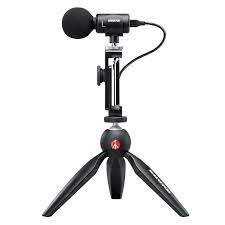
Brief Intro
The Shure MV88+ Video Kit is a compact and highly versatile microphone setup designed especially for mobile field recordings. Perfect for vloggers, podcasters, and musicians, this kit includes a pro-grade microphone, a Manfrotto PIXI tripod, phone clamp, and shoe-mount mic clip — all neatly designed to work with your iPhone.
Overview
Having used the Shure MV88+ myself, what truly stands out is the striking balance it provides between portability and sound quality. It’s a robust solution for capturing high-fidelity audio on the go, with a design that feels both premium and practical. In the world of field recording, your equipment has to be ready for the unexpected, and the MV88+ doesn’t disappoint whether you’re recording concerts, interviews, or ambient sounds. The accompanying ShurePlus MOTIV video app is an invaluable tool, offering on-screen metering and integrated controls. This elevates the user experience, allowing even novices to harness the microphone’s true potential.
Specs
However, in terms of specifications, it’s the flexibility of the MV88+ that leaves a lasting impression. It offers multiple recording patterns, including a mono cardioid, mono bidirectional, and particularly exciting for field recordings, a mid-side stereo pattern which captures immersive soundscapes. Its compatibility across various iOS devices non-intrusively integrates with your existing iPhone without necessitating additional adapters.
Pros:
- Exceptional audio quality with rich detail.
- Versatile recording patterns suitable for various situations.
- Solid build quality and thoughtful design that meshes well with mobile devices.
- Complete kit includes everything needed for immediate use.
Cons:
- The price could be considered a bit steep for casual users.
- Some might find the array of settings and options overwhelming at first.
Price
As for the price, you’re looking at a product that situates itself on the higher end of the market. It’s currently retailed at around $250, but don’t let the price tag deter you. You’re investing in more than a microphone; you’re investing in the Shure legacy of audio excellence. The MV88+ Video Kit doesn’t just capture audio; it ensures that every sonic nuance is preserved with clarity and depth that cheaper microphones often fail to deliver.
In conclusion, if professional-quality audio paired with sleek design and user-friendly functionality is what you seek, the Shure MV88+ Video Kit should be at the top of your list. It’s a purchase that goes beyond a mere accessory – it’s an essential tool for anyone serious about capturing the best possible audio with their iPhone.
Zoom iQ7 Mid-Side Stereo Microphone
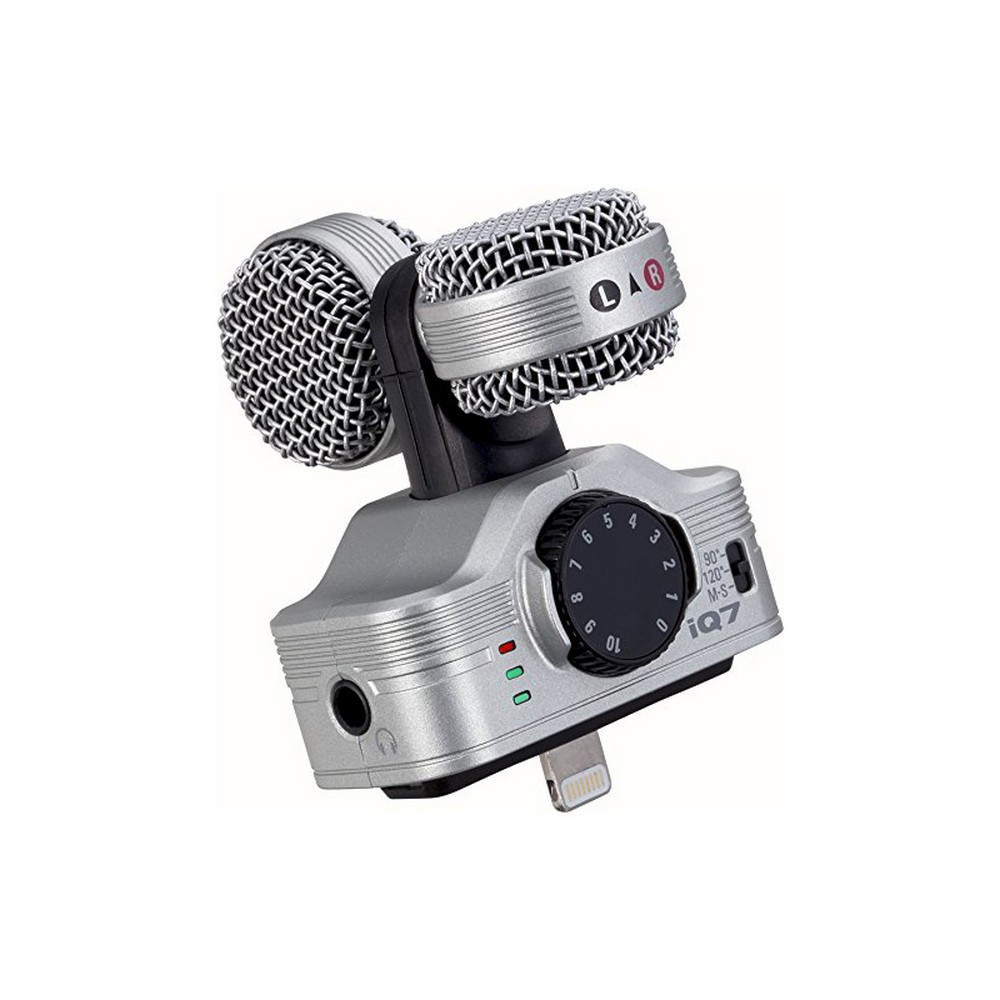
Overview:
The Zoom iQ7 is a compelling little gadget that has caught my attention in the realm of iPhone microphones, mainly due to its unique approach to capturing audio in the field. At first glance, its compactness is striking, as it appears both unobtrusive and highly portable – crucial for field recording. Upon use, it becomes evident that the iQ7 is more than just a pocket-sized microphone; it’s a tool that offers an exceptional audio experience.
The innovation here is the mid-side recording technique, which is not commonly found in microphones of this size and price range. This technique allows for adjustable stereo width, which means you can capture immersive soundscapes as expansively or as narrowly as the situation demands. The flexibility to manipulate how the microphone picks up sound is particularly impressive when recording in a field setting with unpredictable audio sources.
The Zoom iQ7 connects directly to the Lightning port of an iPhone, making it extremely convenient to use on the go. The accompanying Zoom Handy Recorder app maximizes the iQ7’s potential, allowing for on-the-fly tweaks and adjustments that can significantly enhance the quality of your recordings.
Specs:
- Microphone Type: Mid-Side Stereo Condenser
- Connectivity: Lightning connector
- Compatibility: iOS devices with Lightning connector
- Audio Quality: 48 kHz/16-bit
- Controls: Microphone gain wheel, stereo width control
Pros:
- The mid-side stereo configuration is amazing for creating a natural and immersive stereo image.
- The ability to change the stereo width is a game-changer in field recording scenarios, providing versatility.
- Its direct Lightning connection removes the need for additional cables or adapters, streamlining the setup process.
Cons:
- Limited to iOS devices with a Lightning port, which can be a downside for those seeking cross-platform options.
- The build, while sturdy, doesn’t scream premium, and I wouldn’t rely on it surviving a significant drop unscathed.
Price:
The Zoom iQ7 sits comfortably in the mid-tier price range for iPhone microphones, making it an accessible choice for enthusiasts who are serious about capturing high-quality field recordings without breaking the bank. The price generally justifies the features it offers, especially considering the unique mid-side recording capability.
In summary, my opinion on the Zoom iQ7 is rather high. Its distinct features, like the mid-side recording capability, offer a level of control and quality that’s not just useful but also creatively inspiring for field recording. It’s a fantastic middle-ground option for those who want to step up their game without opting for professional-grade equipment just yet. Its ease of use, coupled with a respectable price point, makes it a standout option for any iPhone user looking to capture great-sounding audio on the go.
Rode VideoMic Me-L
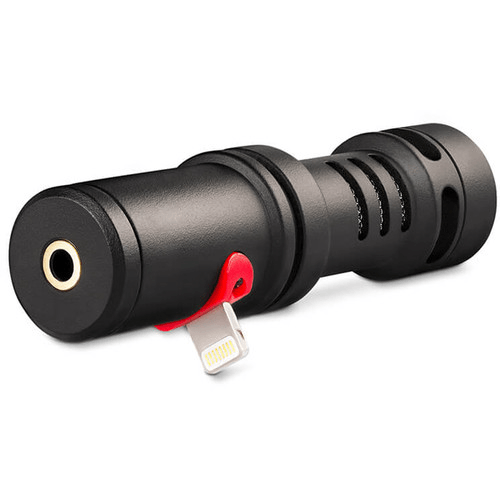
Overview:
The Rode VideoMic Me-L is a compact and highly directional microphone designed to connect directly to an iPhone via the Lightning connector. This sleek little powerhouse is perfect for vloggers, musicians, and anyone needing to capture high-quality audio in the field without carrying bulky equipment.
From my experience with the VideoMic Me-L, what stands out is its ease of use – just plug it in and you’re ready to roll. It’s designed specifically for Apple devices, so it seamlessly integrates with the iOS environment. Its directional cardioid polar pattern is a huge plus, focusing on the sound in front of the mic and minimizing background noise. This is especially useful when recording in noisy environments, like city streets or public events.
The build quality of the Rode VideoMic Me-L reflects its premium feel. Among the plethora of microphones I’ve tested, this one impresses with its sturdy metal body, which also helps to reduce electromagnetic interference. The included furry windscreen—affectionately known as a “dead cat”—is invaluable for outdoor recording, reducing unwanted wind noise that can often ruin a great take.
Specs:
- Acoustic Principle: Pressure Gradient Electret Condenser
- Polar Pattern: Cardioid (directional)
- Frequency Range: 20Hz to 20kHz
- Signal to Noise Ratio: 74.5 dB
- Connection: Lightning Connector
- Included Accessories: WS9 Furry Windshield, Clip
Pros:
- The plug-and-play design is super convenient, with no need for batteries or additional software.
- Exceptional sound quality, captures detail with a great balance between the lows and highs.
- The directional audio pickup is perfect for focused recording.
- The windscreen is a lifesaver when recording outdoors.
- Durable build that feels reliable in any recording situation.
Cons:
- Its directional nature might not be ideal for those wanting to capture a more expansive soundscape.
- Because it connects via the Lightning port, it precludes simultaneous wired charging of the iPhone.
- Can feel a bit conspicuous; it’s not the most discreet microphone if that’s a concern for you.
Price:
The Rode VideoMic Me-L clocks in at a mid-range price point, which I find reasonable given its quality. You’re looking at prices that generally range around $79 to $99, depending on the retailer and current discounts. It’s a solid investment if you’re serious about elevating your iPhone’s audio game without splurging on professional gear.
Final Thoughts:
For content creators who rely on their iPhones, the Rode VideoMic Me-L is a stellar choice. It checks most boxes for quality, usability, and affordability. While there are more discreet or versatile options, this microphone excels in delivering clear, directional audio for field recordings and beyond. The convenience factor of the VideoMic Me-L is tough to beat, making it a favorite tool in my on-the-go recording kit.
Sennheiser Memory Mic
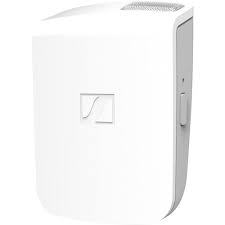
Overview:
The Sennheiser Memory Mic is a standout product for those in need of reliable, high-quality audio while recording in the field with an iPhone. It’s not your average microphone, but a unique blend of portability, convenience, and audio technology that truly enhances the recording experience. The Memory Mic initially caught my eye with its innovative design; it’s small, unobtrusive, and can be clipped onto clothing. This wireless wonder syncs with your iPhone via Bluetooth and continues to record, even when out of range, making it perfect for dynamic or wide-shot video recording where the subject moves away from the phone. Audio quality is strikingly clear, capturing the essence of the environment without overwhelming background noise, due to its omnidirectional condenser capsule.
Specs:
- Connectivity: Bluetooth 4.1 or later
- Recording Time: Up to 4 hours
- Audio Frequency Response: 100Hz to 20kHz
- Charging: USB charging
- Pick-up Pattern: Omnidirectional
- App: Sennheiser Memory Mic App for recording and syncing
Pros:
- Excellent audio quality with clear sound capture.
- No issues with range as audio recording is independent of the video, syncing afterward.
- Compact and unobtrusive design.
- Easy to use with the dedicated app, which is great for those less technically inclined.
Cons:
- Syncing audio and video is an additional step in the post-production process, though the app simplifies this task.
- The need to charge the device could be a downside, though it does offer a substantial amount of recording time.
- A bit pricier compared to some other field recording options.
Price:
The Sennheiser Memory Mic sits in the mid to high range on the price spectrum compared to other iPhone microphones suitable for field recording. Given its features and quality, though, I’d say the investment is justifiable. Prices fluctuate, so it’s best to check the current price online before making a purchase.
In my opinion, the Memory Mic’s strongest asset is its ability to let you move freely while it continues to record audio separately from your phone. It’s an ingenious solution for filmmakers, journalists, and content creators who require both mobility and high-quality audio. Less technical users will appreciate its straightforward setup and operation. Despite the few extra steps of syncing the audio during editing, the quality and flexibility it provides are well worth the minor inconvenience.
Apogee MiC Plus
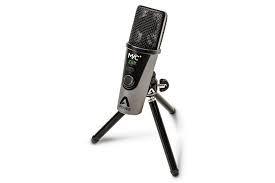
Overview
The Apogee MiC Plus is a finely-tuned piece of technology designed for professional-level audio recording with your iPhone. This little gadget is robust enough to accompany you into the field for various recording tasks—be it interviews, podcasts, or capturing the sounds of nature. From my experience, the MiC Plus stands out for its clear, high-fidelity audio capture, making it an excellent choice for those seeking the best possible sound quality.
The design is compact yet sturdy, suggesting that it can handle the occasional bump or drop without breaking a sweat. What’s more fascinating is how Apogee managed to deliver studio-grade recording capabilities in such a small package. The MiC Plus comes with a simple setup process that doesn’t demand any advanced technical knowledge, and it connects seamlessly to your iPhone, transforming it into a mobile audio powerhouse.
Specs
- Microphone Type: Condenser
- Polar Pattern: Cardioid
- A/D Resolution: 24-bit/96kHz
- Connectivity: USB, Lightning, USB Type-C
- Size: 4.88 inches in length
- Weight: 0.45 lbs (204 grams)
Pros:
- The sound quality is exceptional, capturing audio with crystal clarity that’s hard to find in other field recording microphones.
- With 24-bit/96kHz recording capabilities, you’re getting professional-level detail and depth in your recordings.
- The cardioid polar pattern is adept at isolating the sound you want to record from unwanted background noise—a crucial feature for work in the field.
- Compatibility with iOS devices is seamless, thanks to the included Lightning cable, which means quick setup times and no fussing with adapters or dongles.
- It’s quite portable. Despite its durable build, it’s light enough to carry around without becoming burdensome.
Cons:
- The price point is on the higher end compared to other field recording microphones, which might not fit every budget.
- It lacks multiple polar patterns, which some users might want for different recording situations.
Price
The Apogee MiC Plus is generally priced around $259. While this isn’t the cheapest option out there, the investment feels justified given the professional quality of the recordings you can achieve with it. If sound quality is your top priority and you’re willing to spend a bit more for a compact, robust microphone that punches above its weight, the MiC Plus is certainly worth the consideration.
Conclusion:
In wrapping up, selecting the ideal iPhone microphone for field recording boils down to your specific needs—be it capturing crystal-clear conversations, recording natural soundscapes, or producing high-fidelity music on-the-go. Consider portability, durability, sound quality, compatibility, and additional features before making your choice. With today’s advanced technology, any of the mics on our list can dramatically enhance your audio experience, letting you record with confidence and create content that truly resonates with your audience.
If you’re serious about capturing high-quality audio directly to your iPhone when performing field recording, upgrading to a wireless lavalier microphone is a must. Compared to built-in mics, a wireless lavalier mic gives you the flexibility to record clearly even at a distance, making it a perfect choice for capturing professional-level sound.
FAQs:
- Can I use these microphones with other smartphones or devices?
Most iPhone microphones are designed with a standard connection, like a 3.5mm jack or a USB-C port, allowing them to work with various devices. However, always check compatibility before purchase. - Do I need any special apps to use an external iPhone microphone?
While most external mics work with the default recording app, specialized apps can offer enhanced control over the recording settings and post-production editing. - How does an external microphone improve upon the iPhone’s built-in mic?
External microphones usually provide superior noise reduction, more directional sound capture, and better overall sound quality compared to a phone’s built-in mic, which is crucial for professional-grade field recordings.

































.png)




